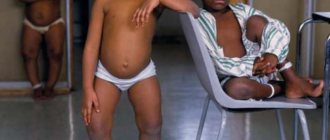Diogenes syndrome is considered a serious pathology that poses a danger to both the person himself and those around him. You may have seen on the news people cluttering their apartments with unnecessary things. They take home everything they can get their hands on, be it broken furniture or ordinary empty boxes. You definitely can’t be in their home. This is a clear example of unsanitary conditions. Why do people behave this way? Is it possible to somehow change the situation?
What is Diogenes syndrome
Diogenes syndrome - what is it? This is a mental disorder in which a person begins to show extreme disdain for himself and life in general. Otherwise called senile squalor syndrome. It is characterized by complete isolation from others, reluctance to do anything, and a tendency to accumulate unnecessary things and various rubbish.
The patient refuses hygiene procedures and home cleaning. Doesn't want to communicate with other people. And yet he does not understand what the problem is.
According to ICD-10, Diogenes syndrome is not considered a separate disease. This is due to the fact that it develops in many brain pathologies. In particular, this is a violation of cognitive functions and emotional-volitional status, which entailed personality changes. This also includes conditions such as, for example, senile dementia, schizophrenia, and the consequences of excessive consumption of alcoholic beverages.
Who is Diogenes
The philosopher Diogenes lived during the times of Ancient Greece. He led an ascetic lifestyle. His dwelling is an earthenware jug that stood in the center of Athens. There he slept and ate food. The latter, by the way, was considered by the Greeks to be a manifestation of extreme disregard for others.
According to many experts, calling pathological hoarding syndrome after a philosopher is incorrect. He, of course, was an ascetic, but he did not collect various rubbish. In addition, he was always ready to communicate with other people and even sought it out. That is why the disease is often associated with Plyushkin, the hero of N.V. Gogol’s poem “Dead Souls.”
Clinical case
Patient T.
, 23 years old, was sent to the regional clinical hospital of Krasnoyarsk with complaints of severe progressive stiffness and painful spasms of the muscles of the back, neck, chest, abdomen, shoulder girdle with significant limitation of spinal mobility, difficulty in performing movements, walking (slowing down and shortening the step) and self-care , limitation of free speech due to stiffness in the articulatory muscles, general weakness, difficulty swallowing food (especially solid), loss of body weight by 10 kg over 3 months. The patient also noted increased stiffness of the trunk muscles with excitement, sudden stimuli (loud sound, fear, etc.) and a decrease during sleep.
From the anamnesis it is known that in childhood he grew and developed without any special features. A vegetarian since childhood, over the last year he began to eat meat. At the age of 16, she was diagnosed with thoracic kyphoscoliosis and was bothered by moderate pain in the back. The development of the present disease occurred over the course of a year; moderate stiffness and soreness appeared in the muscles of the trunk, which was associated with stress. Next, muscle stiffness, slower walking, and difficulty performing physical work progressed. After 3 months, he began to notice choking on dry food and a decrease in body weight. The patient's above-mentioned complaints progressed steadily, muscle stiffness increased and other symptoms became much more pronounced.
Hereditary history is not burdened.
Neurological status upon examination: walking independently, oligobradykinesia noted. The patient is hypomimic and does not sit down during examination (he notes increased contraction in the back muscles when sitting). Oriented, adequate, mild dysarthria in speech, answers questions in short phrases, lacks speech initiative. Needs help in everyday life and with self-care (difficulty getting dressed, getting a mug from the shelf, washing, etc.). Memory within normal limits, decreased attention. Palpebral fissures D=S, pupils D=S, eyeball movements in full, no nystagmus, no diplopia. Trigeminal points are painless, sensitivity on the face is not impaired. The nasolabial folds are somewhat asymmetrical. The tongue is in the midline, the tone of the tongue is slightly increased. The soft palate is mobile, the uvula is in the midline, the pharyngeal reflex is preserved. Dysphagia when eating dry food. Tension of the neck and oromandibular muscles, limitation of rotation and tilt of the head. Severe kyphoscoliosis in the thoracolumbar region, limitation of movements in all parts of the spine. Severe tension in the muscles of the abdomen, back, and neck (Fig. 1).
Rice. 1. View of patient T. (a) from the front and (b) from the side. The paravertebral muscles in the area of scoliosis are moderately painful on palpation. Stiffness in the muscles of the arms and legs. Limitation of the range of active movements in the upper limbs to chest level. Muscle strength in the limbs is sufficient in all segments, tendon reflexes D=S. There are no pathological signs. No sensory disturbances were detected. Coordinator tests are performed satisfactorily. There are no meningeal signs. Pelvic functions are not impaired. Signs of autonomic dysfunction: bright diffuse dermographism, hyperhidrosis of the palms and feet.
The patient underwent further examination by a geneticist at the regional medical genetic center; there was no evidence of lysosomal storage diseases.
According to magnetic resonance imaging of the brain, there were signs of moderate external hydrocephalus, minimal ectopia of the right cerebellar tonsil; multislice computed tomography (MSCT) of the chest, abdominal organs, ultrasound examination (ultrasound) of the abdominal organs - without pathology; esophagogastroscopy - gastric erosion, ultrasound of the thyroid gland - without pathology.
A complete blood count, biochemical blood test, general urine test, rheumatological tests, creatine phosphokinase were within normal limits for the entire observation period. Blood test for thyroid hormones (total T3 - 1.17 nmol/l, total T4 - 100.53 nmol/l, TSH - 2.49 mU/l) - within normal limits. Analysis for tumor markers: alpha-fetoprotein - 3.55 IU/ml (normal), cancer embryonal antigen - 2.9 ng/ml (normal). Needle electromyography (EMG) was performed: spontaneous EMG recorded constant motor activity of muscle units and spontaneous activity in the form of fibrillations, fasciculations and single positive sharp waves. In the trapezius muscles, the motor unit potential is normal. Consulted with related specialists (nephrologist, orthopedist, neuropsychologist, psychiatrist, ophthalmologist, ENT doctor, urologist, gastroenterologist), data regarding ankylosing spondylitis, cancer, systemic connective tissue disease, psychiatric and other pathologies have not been established.
A blood test was performed for antibodies to GAD (glutamate decarboxylase), and an elevated level was recorded - 32.70 U/ml (normal value is less than 10 U/ml).
Considering the gradual onset of the disease with muscle tension, painful spasms, slow progression, difficulty walking, dysphagia, autonomic dysfunction, the absence of cognitive impairment and other somatic and neurological pathology, confirmed by electromyographic data, the presence of antibodies to antigens of GABAergic neurons, the diagnosis “G25” was made .8 Other specified extrapyramidal and movement disorders. SRF with severe rigidity, dysphagia, dysarthria, autonomic dysfunction, skeletal deformities in the form of severe kyphoscoliosis, moderately progressive course, stage of incomplete stabilization.” The patient was consulted in absentia at the Federal State Budgetary Institution "Scientific Center of Neurology". Taking into account the results of the comprehensive examination, the most likely pathogenesis of the disease was autoimmune.
The patient was hospitalized in the neurological department for immunosuppressive treatment and selection of further therapy. During hospitalization, gastroscopy revealed erosive lesions of the stomach, which was a contraindication for pulse therapy with methylprednisolone. A course of treatment with intravenous human immunoglobulin (Octagam 5%) was carried out at a dose of 0.4 g/kg/day for 5 days; baclofen was added as additional therapy at a dose of 10 mg 3 times a day, valproic acid 600 mg per day (for the purpose of stimulation of GABA transmission). During treatment, dynamics were noted in the form of a decrease in muscle stiffness, an increase in the range of movements in the cervical spine, a decrease in speech disorders and dysphagia. The patient was recommended to take cyclosporine at an initial dose of 50 mg/day, which the patient refused to increase further. After treatment for 3 months, the patient's condition stabilized, he became more active, rigidity decreased, speech activity improved, and he swallows freely. During a routine examination, therapy was adjusted: valproic acid was replaced with levetiracetam at a dose of 500 mg/day, diazepam was added at a dose of 10 mg/day, baclofen 30 mg/day, and further use of cyclosporine was stopped, and the patient refused. During a six-month follow-up, the patient's condition remained stable.
The disease further progressed in March 2021, when stiffness in the muscles of the shoulder girdle and neck began to increase, and swelling of the feet appeared, which were regarded as a side effect of taking levetiracetam. The drug was discontinued, but the swelling of the feet did not regress. In April 2021, paresis of the left arm was added to the clinical symptoms, which developed acutely during a meal when the arm was suspended (Fig. 2).
Rice. 2. Patient T. Peripheral monoparesis on the left. An emergency medical team was called, the patient with suspected acute cerebrovascular accident was taken to the hospital, examined, a dynamic MSCT of the brain was performed - without pathology, a stroke was excluded. During the examination, progression of kyphoscoliosis was noted, peripheral paresis of the proximal (3-3.5 points) and distal (1.5-2 points) parts of the left upper limb was detected with loss of reflexes, absence of pain, and the presence of vegetative-trophic disorders in the form of edema of the left hand , painful upper monohypesthesia of the left arm. Palpation revealed pronounced rigidity of the paravertebral muscles and neck muscles; trigger points were identified in the muscles of the neck and shoulder girdle on the left. According to the results of electroneuromyography (ENMG), a slight decrease in the speed of impulse conduction is recorded during antidromic stimulation of the sensory endings of the median and ulnar nerves on the left. The dynamics revealed an increase in the titer of antibodies to GAD - 101.50 U/ml.
The acute occurrence of brachioplexopathy on the left when performing arm movements against the background of severe muscle rigidity in the neck and shoulder girdle was probably due to the compression-ischemic factor in combination with dysimmune mechanisms. The latter is supported by an increase in the titer of anti-GAD antibodies, accompanied by a deepening of previously existing and the emergence of new clinical manifestations of the disease. In addition, upon examination, the patient had swelling of the feet (Fig. 3),
Rice. 3. Patient T. Swelling of the feet. painful hypoesthesia of the “sock” type, loss of Achilles reflexes on both sides. According to ENMG data, a decrease in the speed of impulse conduction was recorded during antidromic stimulation of the sensory endings of the sural and superficial peroneal nerves on both sides. Thus, along with plexopathy, the patient was diagnosed with damage to another part of the peripheral nervous system in the form of distal sensory-vegetative polyneuropathy of the lower extremities. The lack of data on the paraneoplastic process suggests that the most likely cause of the development of polyneuropathy in the observed patient is an autoimmune mechanism. In addition, given the patient's low body weight, it is possible to assume metabolic damage to the nerves of the lower extremities.
Taking into account the progression of neurological symptoms, an increase in the titer of antibodies to GAD, and the absence of changes in esophagogastroscopy, a course of pulse therapy with methylprednisolone was administered at a dose of 1000 mg 5 times. The patient was consulted by a physical therapy doctor, physical therapy was selected, and Trental and neurometabolic therapy (thioctic acid, Keltican complex) were added to the therapy. The patient was discharged in a stable condition, however, no significant changes in symptoms of damage to the peripheral nervous system were noted.
Symptoms of Diogenes syndrome
In addition to pathological hoarding, Diogenes syndrome is characterized by the following manifestations:
- ignoring hygiene rules;
- almost complete isolation from society;
- lack of shame;
- unwillingness to do anything;
- stinginess, greed;
- lack of self-criticism;
- aggression in response to criticism and remarks from outside.
In most cases, a person suffering from Diogenes syndrome lives in poverty. But this is not due to lack of money. Most often, they have savings that they keep either in a safe place at home or in a bank account. No one can touch them.
The patient takes home everything he finds in landfills. This could be cardboard, broken furniture, children's things and toys, and much more that he will never need. Sometimes things are replaced by stray animals. A person collects cats and dogs at home, which, naturally, he cannot properly care for.
Due to the large amount of trash or pets, there is an unpleasant smell in the apartment. But people don’t seem to feel it or don’t want to notice it. They will never get rid of their “wealth”. Moreover, they aggressively refuse to treat diseases caused by unsanitary conditions.
Most often, older people experience Diogenes syndrome. Those at risk are those who have been interested in collecting things for many years, for example, badges, coins or stamps. But recently the disease has become “younger”.
“Frail patient” or senile asthenia syndrome
Senile asthenia (or “frailty” - frailty) is a term presented in the international classification of diseases as R54, combining about 85 different geriatric conditions and syndromes. However, most often it is:
- loss of body weight (sarcopenia) of at least 4.5 kg per year;
— decrease in hand strength according to dynamometry data;
- decrease in physical activity:
— slowing down the patient’s movement speed;
- severe general weakness and increased fatigue.
The combination of at least three or more of the above signs allows a patient to be diagnosed with SSA, and the presence of 1 or 2 symptoms indicates preasthenia.
The risk of developing senile asthenia syndrome (FAS) naturally increases in patients over 80 years of age, but according to the latest data, premature asthenia in patients aged 60-70 years cannot be ruled out.
There are predisposing risk factors in the genesis of SSA. These include age, gender (it is believed that senile asthenia is significantly more common in women), level of education (namely in people with lower education), marital status (asthenia is more common in divorced patients or widowers, in people who have never been married), socio-economic conditions (in Russia, 84% of the elderly population have SSA), urbanization (residents of rural areas are more susceptible to developing SSA).
Below is an algorithm for diagnosing SSA using the “age is not a barrier” system for all patients over 65 years of age and the advisability of consulting a geriatrician.
| Patient >= 60 years old → Screening according to the “Age is not a barrier” scale | ||
| Question | Answer | |
| 1 | Have you lost 5 kg or more in the last 6 months? (Weight) | Not really |
| 2 | Do you experience any limitations in your daily activities due to decreased vision or hearing? | Not really |
| 3 | Have you had a fall-related injury within the last year? | Not really |
| 4 | Have you been feeling depressed, sad or anxious in recent weeks? (Mood) | Not really |
| 5 | Have you had problems with memory, comprehension, orientation, or ability to plan? | Not really |
| 6 | Do you suffer from urinary incontinence? | Not really |
| 7 | Do you have difficulty moving around the house or outside? (Walk up to 100 m or climb 1 flight of stairs) | Not really |
| "Fragile" patients | "Pre-frail" patients | "Strong" patients |
| >= 3 positive answers | 1-2 positive answers | 0 positive answers |
| consultation with a geriatrician, conducting a comprehensive geriatric assessment, drawing up an individual patient management plan | It is advisable to consult a geriatrician |
Next, when frailty is detected, the frailty index is assessed, which is part of a comprehensive geriatric assessment performed by a geriatrician.
Assessment of the frailty index (AFI)
| ISA evaluation parameters | Point value | |
| 1 | self-assessment of an elderly and senile patient’s level of own health | 0 - very good; 0.25 - very good; 0.5 - average; 0.75 - bad; 1.0 point - very bad. |
| 2 | the presence, according to the patient, of at least one of the following diseases: arthrosis, history of stroke, ischemic heart disease, diabetes mellitus, COPD, bronchial asthma, anxiety-depressive syndrome, arterial hypertension, cataracts | 0—no disease; 1, 0 - diseases occur |
| 3 | assessment of the functional state (ability to sit without assistance, walk 100 meters; ability to get up from a chair independently; prolonged standing; independence in housekeeping; social activity; ability to stretch arms forward and hold them; ability to concentrate; walk for a long time; ability to wash independently , getting dressed, working; taking a bath, using the toilet, carrying objects, maintaining the emotional sphere) | 0—no problems; 0.25 - slight decrease in abilities; 0.5 - moderate decrease; 0.75 - pronounced decrease; 1, 0 - impossibility of independently performing the listed actions |
| 4 | body mass index | 0 — BMI >18.5; 1.0 — BMI < 18.5 |
| 5 | muscle strength during hand dynamometer test | 0—no weakness; 1, 0 — presence of weakness |
| 6 | ability to walk quickly | 0 points - saved; 1, 0 point - not saved |
The higher the senile asthenia index, the more the patient needs outside care:
0 - 0. 2 points - no signs of senile asthenia.
0.2 - 0.4 points - moderately pronounced signs of senile asthenia.
0.4 points and above - severe senile asthenia.
The first letters of the English term “senile asthenia” FRAILTY combine the following principles of prevention:
F (food intake maintenance) – implies control of food intake and regulation of diet;
R (resistance exercises) – physical activity;
A (atherosclerosis prevention) – prevention of the development of atherosclerosis;
I (isolation avoidance) – avoid social isolation;
L (limit pain) – relieve pain;
T (tai-chi or other balance exercises) – performing physical exercises;
Y (yearly functional checking) – regular medical examinations.
Thus, “fragile” patients with senile asthenia syndrome require special attention from doctors and medical personnel and an individual approach. It is important to remember this clinical condition when caring for elderly patients.
Donetskaya O. P.
Leushina K.V.
Stages of Diogenes syndrome
Experts distinguish 5 stages of development of this pathological condition:
- A person's home is constantly in chaos. But there aren't a lot of useless things there yet. At this stage, the patient’s behavior does not cause concern.
- Gradually, there is more garbage in the apartment or house, which the patient forgets to get rid of. An unpleasant odor and mold appear.
- There is more and more junk. It takes up all the free space. Sometimes it is difficult to walk from one room to another.
- It is simply impossible to stay in the home. Everything is dirty, covered in mold and emits an extremely unpleasant odor. It's hard to say when the place was last cleaned.
- It is no longer possible to live in an apartment. Even the walls and ceiling were damaged. The unpleasant smell begins to bother the neighbors.
The last stage poses a risk to the health and life of the patient. And that is not all. Those who live around may suffer. Unsanitary conditions increase the risk of reproduction not only of cockroaches, but also of mice, rats, and bedbugs.
In critical situations, you cannot do without the help of a psychiatrist.
Causes
The main reason for the development of Diogenes syndrome is disturbances in the functioning of the frontal lobe of the brain. This is where the center responsible for rational thinking is located. Factors that provoke problems are considered:
- various traumatic brain injuries;
- severe stress;
- excessive consumption of alcoholic beverages;
- taking drugs;
- age-related mental disorders;
- pathological tendency to accumulate trash.
Previously, stinginess or poverty for many years was considered another reason. But later scientists proved this statement wrong.
Causes of pathology
Plyushkin's syndrome still remains not fully understood. But despite this, scientists have identified several main reasons that could provoke the emergence and development of pathology:
- Special personality traits. Excessive prudence and saving even on necessary things can cause the development of Plyushkin syndrome. As people get older, greed leads them to clutter their home with everything they are offered to take. What ends up happening is uncontrolled hoarding.
- Disadaptation of a person. Patients do not recognize life in society and do not need to communicate with other members of society. Due to their closed nature, they begin to build barricades from garbage in the house, trying to at least hide from the world in this way.
- Unfavorable living conditions. The disease often affects those people who in the recent past suffered serious financial problems or lived during a crisis or shortage of something. This becomes especially noticeable among people born during wartime.
- Heredity. Plyushkin syndrome cannot be determined at the genetic level and cannot be inherited. But the behavior of parents and their habits are usually copied by any child. That is why, if immediate family members tend to accumulate unnecessary things in large quantities, children can adopt the behavior of adults.
- Problems in childhood. If a child was given little attention, did not give him gifts or buy him sweets, in adulthood he himself will begin to make up for what he lacked earlier. Sometimes this ends with the appearance of Plyushkin syndrome.
- Tragic moments. In the life of any person there are both joyful and difficult moments. Severe stress and prolonged depression can lead to the syndrome as a complication of a neurasthenic disorder.
- Loneliness. Some patients who lack communication with other people try to surround themselves with different things that can somehow drown out loneliness.
- Pathological disorders. Diseases of the circulatory system, traumatic brain injuries, neoplasms in the brain, consequences of operations, diseases of the nervous system and any neuralgic diseases can be another reason for the appearance and development of the syndrome.
- Mental disorders. For example, schizophrenia is often accompanied by syllogomania, which causes unjustified acquisitions and accumulation of unnecessary things and objects.
- Bad habits. People who suffer from alcoholism become prone to uncontrolled hoarding over time.
Almost all of these reasons are evidence that Plyushkin syndrome occurs due to some kind of mental disorder. It’s not scary if a person buys really necessary things, even in large quantities. The presence of the syndrome should be suspected when new acquisitions turn out to be completely useless.
Diagnosis and treatment
As stated above, Diogenes syndrome is not an independent disease. This is a symptom of one of the mental disorders. They can be diagnosed using brain imaging, which will show damaged areas or tumors. A visit to a psychiatrist is also needed.
How to treat Diogenes syndrome? Difficulties may arise in this matter because the patient is not aware of the problem. So, family and friends must take responsibility for its decision. They are the ones who should pay attention to warning signs and ask a doctor for help.
Typically, nootropic drugs that normalize brain function, antipsychotics, and antidepressants are used to treat Diogenes syndrome. But this is not enough.
It is necessary to give the patient motivation to act. Tell him, for example, that his large “collection” needs to be organized, otherwise it will be unpleasant to look at. Gently lead him to the fact that he needs to observe the rules of hygiene both in relation to himself and in relation to his home. Tell the person that you would like to visit him more often, but you don’t even have a place to sit.
Never throw away things without his consent. This can provoke anger and aggression. It is better to surround the patient with care and love. Show that under any circumstances you remain a loving person.
If all else fails, the only way out is treatment in a psychiatric clinic. But remember that it requires either the consent of the patient himself or a court decision.
Delusional thoughts in an elderly person. How to communicate?
The symptom of delusional ideas often accompanies cognitive impairment and can be triggered by symptoms characteristic of dementia:
- Impaired memory, attention and thinking. With dementia, a person gradually loses the ability to maintain attention on a dialogue, come to logical conclusions and make inferences, and remember what is happening (while retaining memory for past events). The gradual loss of higher mental functions leads to the fact that the world in the eyes of a person with dementia loses order and becomes increasingly chaos. In order to cope with the anxiety that this chaos inevitably brings, a person unconsciously begins to come up with explanations for what is happening, to create a new picture of the world, which can look very bizarre, and sometimes frightening to the patient himself (for example, with delusions of causing harm, the patient may feel that relatives want to transfer the apartment to themselves, and get rid of him as quickly as possible, or the neighbors for some reason spoil the property, run away from the world, etc.)
- Visual/hearing impairments.
- Visual/auditory/tactile hallucinations. People with dementia can suffer from true hallucinations, that is, those in the reality of whose existence the patient believes almost unconditionally and builds delusional ideas on their basis.
A distinctive feature is that a person suffering from delusional ideas does not allow himself to be convinced and does not want to listen to the truth. At the same time, an elderly person may, for example, admit that he has memory problems. Attempts to convince a loved one often lead to verbally, and sometimes physically, aggression and resentment on the part of the patient.
The most common types of delusions:
1) delusions of damage (ideas about theft, deception, forgery, damage to property);
2) delusions of poisoning (the idea that someone (often a caregiver) is trying to poison the patient with food or medicine);
3) delusion of influence (ideas about irradiation by any devices that affect health, thoughts, feelings, ideas about someone’s hypnotic influence against the will of the patient);
4) delirium of jealousy (children do not like; spouse cheats, wants to move in with a new partner and leave the patient, etc.).
How to communicate with an elderly relative if he has delusional ideas?
As with any other symptoms of dementia, it is important to see your doctor. The doctor may prescribe medication that will help relieve symptoms or at least reduce the intensity of their manifestation. But, of course, there are no medications that could get rid of all the symptoms of dementia, including delusional ideas. Therefore, it is important to learn to live with the problem that has arisen without injuring yourself and an elderly relative.
1. It is important not to convince an elderly person , not to ask clarifying questions and not to develop a delusional story. It is necessary to listen with sympathy and seriousness to what the relative says. Your acceptance and understanding will give him the necessary feeling of security.
2. Don't scold for crazy ideas . The disease does not appear at the will of the patient, and older people cannot control it. Also, don’t take crazy ideas personally. Try to retain the warmth that was between you before; it will help you accept your loved one with the changes that are happening to him at the moment.
3. If an elderly person convinces you that something was stolen from him that the thing is really missing and offer to look for it together. If a relative often loses his things in public places (glasses, scarves, keys, etc.), then a number of problems in communication will be removed by pre-prepared duplicates of the most frequently lost things. Also keep in mind that many “lost” items often end up in the trash.
4. Elderly people need a feeling of security. Often old people, expressing delusional ideas to their interlocutor, expect to receive an answer from him that will give them a feeling of safety and protection. Formulate short, calming words of encouragement for yourself. Often, delusional ideas are repeated over a long period of time, almost word for word, so you can prepare for them in advance - this way you will set yourself up for a calm and friendly tone of communication.
5. If a person with dementia begins to hallucinate, remain calm and try to redirect the elderly person's attention. A calm environment is generally important: the absence of emotional and cognitive overload has a positive effect on the general condition of the patient, and the manifestation of delusional ideas is mitigated.
6. Continuous care for the elderly. A relative suffering from delusional thoughts should not be left alone, so if you work, provide constant care for your loved one. It is better to choose not a private nurse, but a reputable boarding house for the elderly - in such residences, in addition to highly qualified staff, doctors and psychologists, there is an undeniable advantage: the opportunity to constantly be in society. Communication with others will help your loved one not get hung up on delusional thoughts. Daily walks in the fresh air, participation in master classes, concerts, six balanced meals a day will support the emotional state of the patient, and competent doctors and psychologists will stop delusional ideas. When choosing a residence, pay attention to its location. Idyll boarding house for the elderly , located on Bolshaya Filevskaya Street in a park area, specializes in a rehabilitation program and accepts patients in any state of health and has highly qualified medical personnel, especially psychologists who have many years of experience working with patients with dementia).
Remember: the peace of mind of an elderly person depends on your peace of mind, take care of yourself and your loved ones!
Forecasts and preventive measures
The prognosis, unfortunately, is unfavorable. Treatment will improve the patient's condition, but not for long. After some time, the symptoms of Diogenes syndrome will return.
As for prevention, it is associated with increased mental activity. It is recommended to regularly devote time to reading, solving crosswords, and studying foreign languages. You also need to change your lifestyle by taking up, for example, sports. You should spend more time outdoors.
To prevent the syndrome in older people, you need to provide them with adequate nutrition, monitor their health, and control their weight. It is important to establish a sleep and rest schedule.
Unusual syndromes
Alice in Wonderland syndrome. In this neurological condition, a person has difficulty separating objects by size, believing that everything is tiny (micropsia) or huge (macropsia) relative to its actual size. Such a disorder may be the initial signal of infection with the Epstein-Barr virus (mononucleosis), in some cases it may be caused by a headache - migraine, or indicate the initial stage of epilepsy. In a healthy person, similar changes in perception can be caused by narcotic drugs.
SISTINE CHAPEL syndrome is fainting that occurs when the head is thrown back, as a result of a sharp decrease in blood flow through the vertebral arteries and ischemia of the brain stem. Often found in atherosclerosis of the vertebral arteries and cervical osteochondrosis in older people. This is a syndrome in which the cause of loss of consciousness is vertebrobasilar insufficiency. This syndrome was first described in tourists visiting Michelangelo's frescoes on the dome of the Sistine Chapel in Rome.
Stendhal syndrome . Another unusual illness that often occurs among tourists: a person experiences severe excitement, trembling, dizziness and even hallucinations when he finds himself in a place where a large number of art objects are exhibited. Perhaps the most dangerous place for those suffering from this disease is the Uffizi Gallery in Florence. And for the first time Stendhal spoke about alarming symptoms in the book “Naples and Florence: a journey from Milan to Reggio.”
Diogenes syndrome . The name of this syndrome is not entirely fair to the Greek philosopher Diogenes, who, according to legend, lived in a barrel, demonstrating to the world his minimal living needs and abandoning all the amenities that existed at that time.
The prevalence of this syndrome in the world is about 3% among elderly people over 65 years of age. These people accumulate piles of garbage in their homes and live in complete poverty. At the same time, they do not care at all about their appearance and hygiene, and are indifferent to the dirt and sewage that accumulates in their home. Oddly enough, they can be the owners of large fortunes. They consider themselves beggars, which makes them greedily accumulate and store any items.
Foreign accent syndrome is a speech disorder characterized by slight changes in intonation, speed and stress, which makes the patient's speech sound like a foreigner trying to master a foreign language. This syndrome usually appears after a serious traumatic brain injury or stroke, and its peak appears 1-2 years after the injury.
An example of senile squalor syndrome
Kurt Degerman lived in the Swedish city of Skellefteå. This man led a miserable existence for 3 decades. He lived in a landfill, ate what he found there. At the age of 60 he died. What is the interest of this case? It seems like nothing unusual, a homeless person, of which there are thousands.
Kurt had Diogenes syndrome. Around the age of thirty, he decided that he no longer wanted to spend money on stores. This concerned food and clothing. The man moved to the trash heap. All the money he earned from trading banks or begging, he spent on securities and precious metals. As a result, by the time of his death he had accumulated a considerable fortune. I just couldn’t use it anymore. Everything went to relatives. And they, by the way, claimed that Kurt was well versed in the financial topic.
Symptoms
Patients are not able to think critically about their condition, so they rarely seek special help, considering their “hobby” to be absolutely normal. Diogenes syndrome can be suspected based on the following signs:
- pathological passion for hoarding;
- negative and aggressive reaction to condemnation, inability to self-criticize;
- neglect of hygiene rules;
- greed;
- attempts to isolate yourself from society;
- indifference to others;
- lack of shame.
Patients with Diogenes syndrome bring absolutely everything into the house: glass, broken furniture, even rotten vegetables and fruits.
Often these accumulations smell unpleasant, and rats and cockroaches infest the house. A person with Diogenes syndrome, in addition to himself, suffers from relatives and neighbors. Attempts on the “collector’s” collection and attempts to get rid of it are met with severe rebuff, even leading to family quarrels. Patients become secretive, taciturn, and may not go out for a long time, considering communication with people pointless. Due to neglect of hygiene, they often suffer from various ailments, but do not seek medical help. The consequences of such an attitude towards yourself and others can be very sad. What distinguishes those suffering from Diogenes syndrome is a complete absence of a sense of shame: they can look like homeless people, relieve themselves wherever they want, and do whatever comes to their mind. Sometimes this becomes a reason for the police to detain a person.
A characteristic sign of the disorder may be that patients, even with a stable financial situation, count every penny spent and are very upset due to what they consider to be high expenses. There are cases when people moved to a garbage dump so as not to spend money on maintaining the apartment.
Any of these symptoms should alert relatives and neighbors and serve as a reason to call a specialized medical team.











